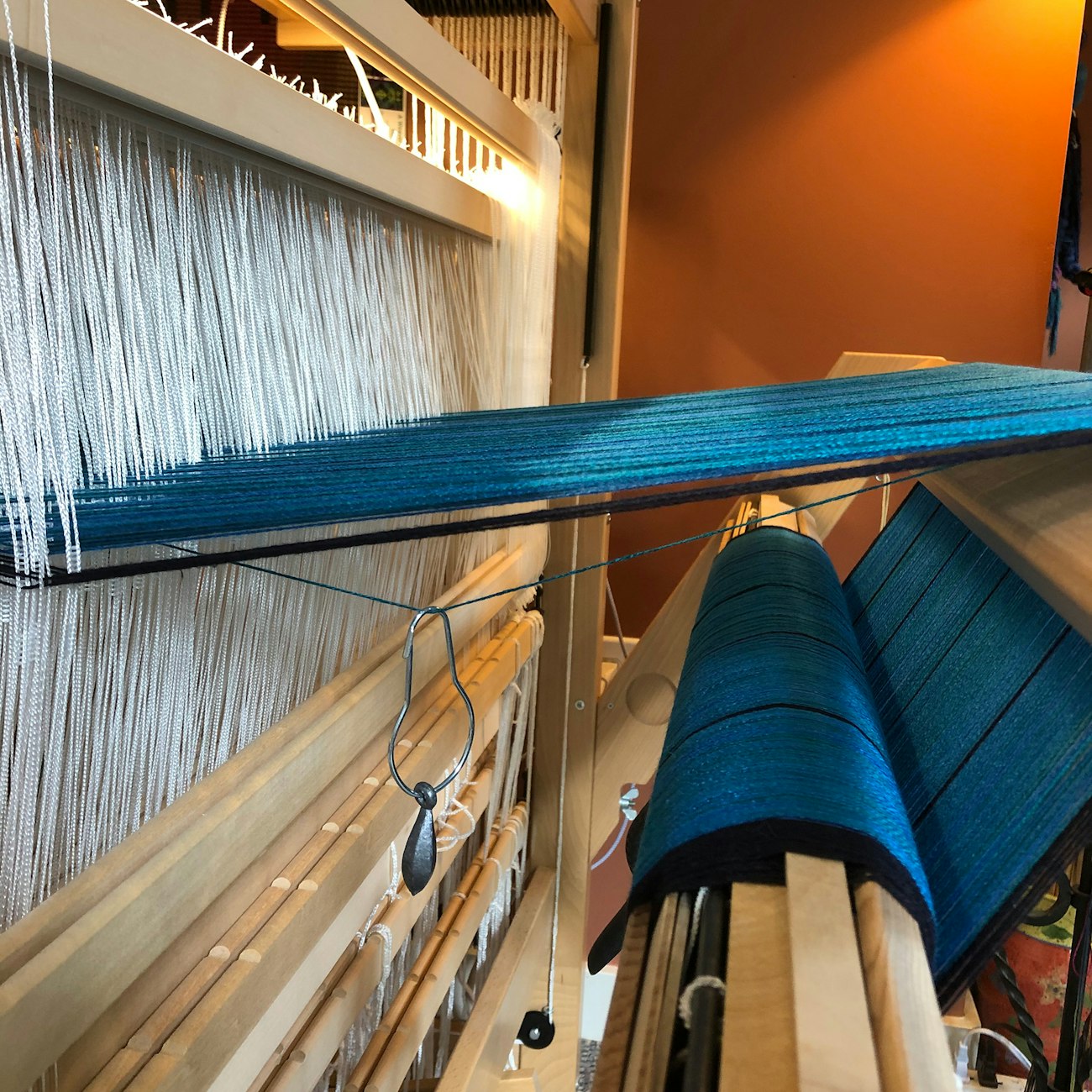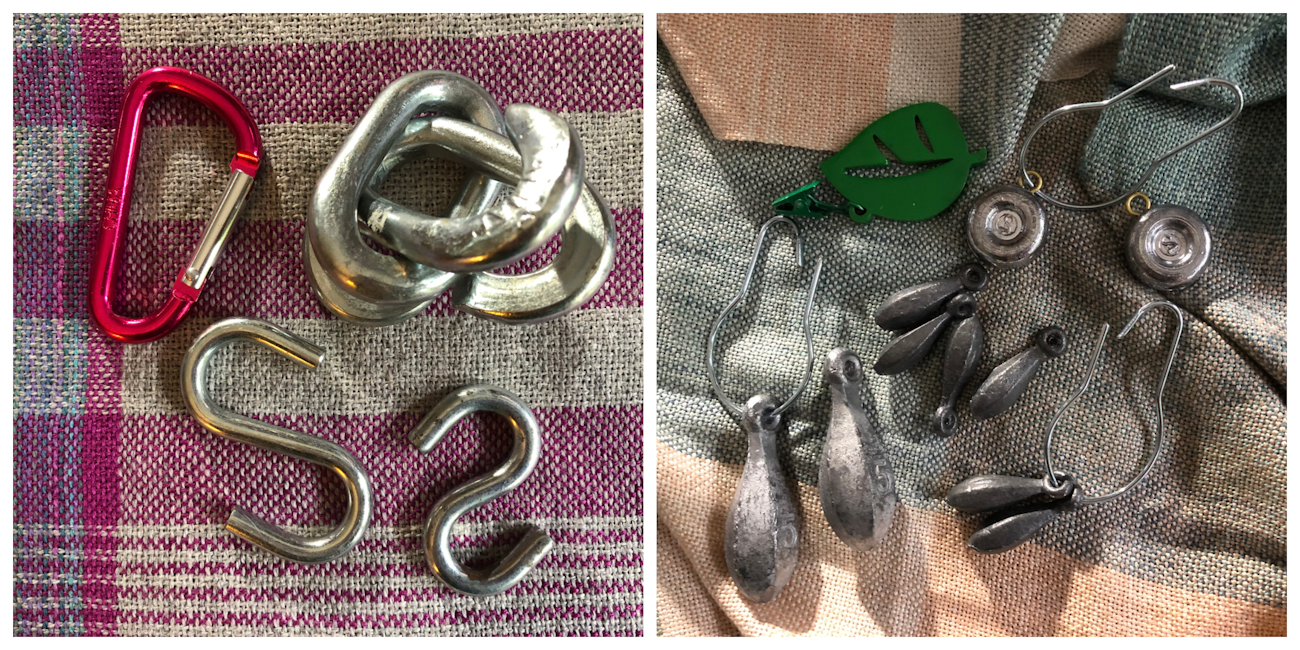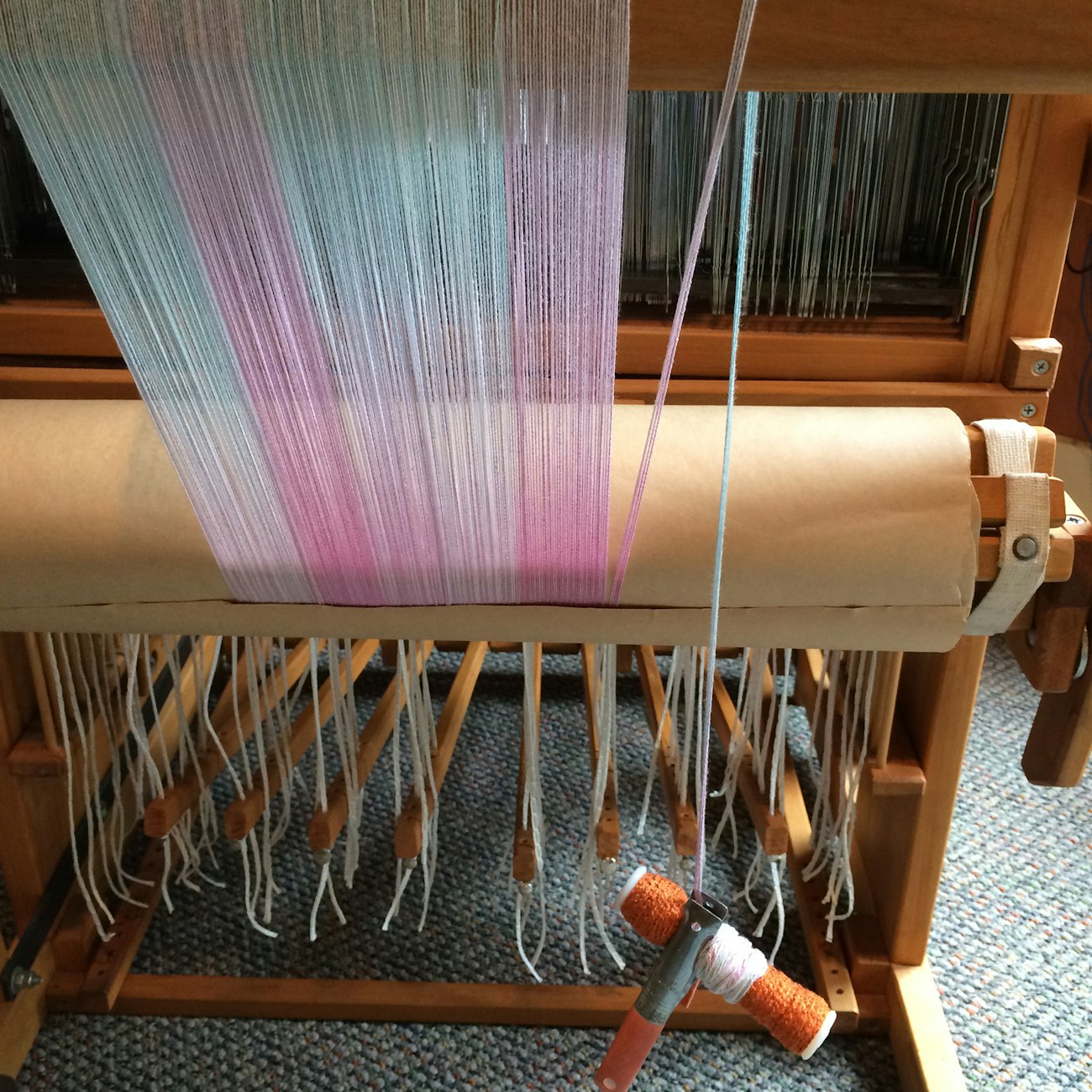If you’re a newer weaver, I’ll wager that you’ve come across a “lazy end” in your warp a time or two already. If you’re a seasoned weaver, it’s likely you’ve had a slack warp end or ends many more times than that. It happens to us all, and it’s not always a sign of poor warp management. No matter how disciplined you might be in winding your warp, dressing your loom, and tying on, one of those sneaky warp ends can sneak out of tension when you least expect it.
The best thing to do when you have one of these recalcitrant ends make itself known is to attach a small weight to it in such a way that it doesn’t restrict your warp from advancing. Usually that means dropping it off the back beam. It’s also important to use a weight that when added to the slack warp end, creates a similar tension to the tension of your overall warp. Though physics is somewhat involved here because of the difference between a freely hanging weight and a tensioned warp, don’t overthink this. Simply gauge the tension on the rest of your warp and find something in your weight “stash” that creates the tension you are looking for. Test a few weights. After you have added one, close your eyes and strum your warp lightly with your fingers to see whether you can find the newly tensioned end. If you can, adjust the size of the weight up or down and try again.

Place a weight on a lazy end either between the castle and the warp beam, as shown here, or drop it behind the back beam.
Recently, in response to a weaving article on supplemental warps, a reader suggested using the tried-and-true method of filling 35 mm film canisters with coins as weights. This is a great solution whether they are made of aluminum or plastic, and empty pill containers work as well. You can fill a canister or pill container with as many coins, rocks, or random nuts and bolts as needed for the weight you need, tie a strong cord to it, and attach it to your slack warp end with a spring clip, or simply let it slide down on the end and bump off the warp beam. When things are really going sideways tension-wise, some weavers attach bottles of water filled to the perfect weight to achieve the tension they need.

Liz has many alternatives to choose from when it comes to small weights, from S-hooks and other clips that she finds at the hardware store (left) to fishing weights (right).
As someone who loves to work on looms, I have a penchant for hardware and sporting-goods stores because they carry very cool stuff. The photo on the right above features my favorite little weights, all from fishing-supply departments. The weights range from 0.85 oz for the small teardrop to 2.4 oz for the donut and up to 4.8 oz for the large teardrop. Of course, you can find them in larger sizes, but for warp ends, these three meet my needs. I use all of them hanging from old-fashioned shower-curtain clips. On the left are weights that you can find at a hardware store; some of them, such as the S-hooks, can slip right over an end.

When working with a painted warp, wind on backup warp ends and tension them separately from the rest of your warp. They’ll come in handy if an end breaks.
When I am winding on a painted warp, I like to wind backup warp ends just in case I run into a problem. If I snap a thread in a painted warp while I’m weaving, I’d be hard pressed to find a perfectly matching one in my stash to replace it. For those projects, I intentionally wind 3-4 more warp ends than what I need for my project, and then hang them off the back beam. The weight isn’t so important here, but you want it heavy enough to hang it out of the way of the warp and do so in a way that you can adjust its position as you advance your warp.
Most weavers have a collection of all sorts of odds and ends to use for tensioning, from S-hooks to carabiners to who knows what. The photos above show just a small selection of the weight stash that I use for tensioning warp ends, and they all pinch-hit in many other ways in my weaving room.

